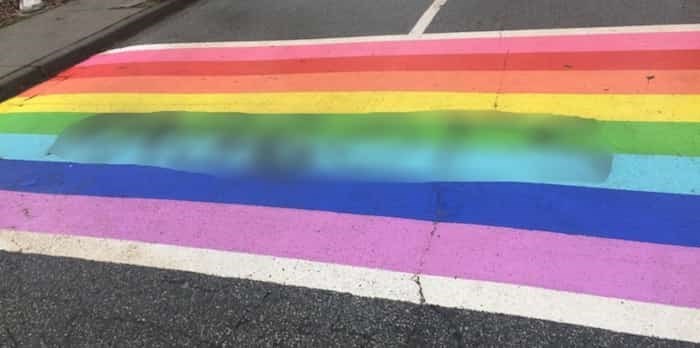While hate-motivated crimes based on race, religion or sexual orientation dropped countrywide in 2018, they rose significantly in B.C. newly released show.
“Despite the decline, police-reported hate crimes had been increasing since 2014 and the number reported in 2018 was the second highest since 2009,” Statistics Canada said.
There were 1,798 police-reported hate crimes across Canada in 2018, a drop of 13% compared to the 2,073 in 2017.
Of those, 173 were against LGBT people, a drop of 18% from 2017’s 204.
In B.C., however, hate crime against LGBT people jumped 78% – to 32 from 18 reported incidents.
B.C did see a drop in hate crimes based on religion, down 33% from 103 in 2017 to 69 in 2018.
That also challenged the national trend. Countrywide the number fell 24%.
And those based on race declined 11% countrywide from 878 to 780 while in B.C. the rose from 116 to 122, an increase of 11%.
“Hate crimes targeting the Black population accounted for 16% of all hate crimes in Canada and remained the most common type of hate crime targeting a race or ethnicity,” Statistics Canada said. “The number of police-reported hate crimes against the Arab and West Asian populations declined for the first time since 2013. These crimes accounted for 14% of hate crimes targeting a race or ethnicity and 6% of all hate crimes in 2018.”
Ontario saw the biggest decline in overall hate-motivated crime numbers while Alberta saw the biggest jump. Quebec numbers also dropped.
Statistics Canada said hate-motivated crime accounts for a small proportion of .
And, Statistics Canada stressed, police hate crime data reflects only those incidents that come to the attention of police and are classified as hate crimes.
“As a result, fluctuations in the number of reported incidents may be due to a true change in the volume of hate crimes, but they might also reflect changes in reporting by the public due to increased community outreach by police or heightened sensitivity after high-profile events,” Statistics Canada said.
Across Canada, non-violent hate crime accounted for 57% of all 2018 hate crimes but the number of incidents decreased by 21% from a year earlier, with general mischief (-26%) and public incitement of hatred (-40%) driving the decline.
Violent hate crime, which accounted for 43% of all hate crime in 2018, decreased 2% as a result of fewer incidents of uttering threats (-11%) and criminal harassment (-21%).
The report said violent crimes accounted for a larger share of crimes targeting sexual orientation compared with other types of hate crimes. In 2018, 62% of hate crimes motivated by hatred of a sexual orientation were violent. In comparison, about 24% of hate crimes targeting religion and about 53% targeting race or ethnicity were violent.
And, in contrast to the overall downward trend in hate crimes, there was an increase in incidents of assault (+6%) and mischief towards property used primarily for worship or by an identifiable group (+43%).
@Jhainswo



